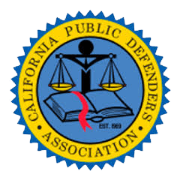
Ever found yourself caught in the thick fog of legal jargon, trying to make sense of Assault Laws? You’re not alone. These laws are as intricate and complex as a spider’s web.
You see, Assault Laws don’t just protect us from physical harm; they safeguard our peace and dignity too. They’re like an unseen security officer patrolling our lives, ensuring that offensive contact or even the fear thereof doesn’t disturb our daily routine.
In this deep dive into California’s Assault Laws, we’ll navigate through simple assault charges to aggravated ones. We’ll untangle what it takes for someone to be charged with assault – shedding light on ‘defendant acts’, ‘intent’ and ‘reasonable apprehension’. But hold tight because penalties aren’t lightweight either! Ever wondered about defense strategies? Well you’re in luck – we’ve got those covered too!
Table Of Contents:
- Understanding Assault Laws in California
- Types of Assault Charges in California
- The Legal Elements Required for an Assault Charge
- The Consequences and Penalties for Assault Charges
- Defense Strategies against Assault Allegations in California
- FAQs in Relation to Assault Laws
- Conclusion
Understanding Assault Laws in California
Assault laws protect the public safety by punishing intentional acts that create an apprehension of harmful contact. But what does this mean exactly?
If you do something on purpose that makes another person think they’re likely to be hurt soon, it’s considered an assault. The key here is the victim’s belief that your act will lead to imminent harmful or offensive contact.
This doesn’t necessarily mean physical harm occurred. Even without bodily harm, as long as there was reasonable fear of it happening due to your actions, an assault charge could be on the table.
The specifics can vary depending on circumstances and severity which we’ll get into more later but for now just remember: No one needs to actually get hurt for an assault charge under California law.
Types of Assault Charges in California
The Golden State classifies assault charges into various degrees, each carrying its own penalties. At the heart of these classifications are two primary types: simple and aggravated assault.
Simple Assault in California
A simple assault charge involves a person attempting or threatening to cause physical harm to another without any weapons involved. It’s viewed as a misdemeanor offense with potential consequences like fines or short jail sentences.
This category also covers situations where offensive contact may not have caused serious bodily harm but was deemed harmful by the victim.
Aggravated Assault and Its Consequences
In contrast, an aggravated assault charge implies more severe circumstances – use of a weapon, causing serious bodily injury, or assaulting protected individuals such as peace officers or public servants performing their duties.
Felony offenses fall under this umbrella due to their severity. A conviction can lead to longer prison sentences and substantial fines; making it crucial for those accused to seek help from experienced criminal law practitioners right away.
The Legal Elements Required for an Assault Charge
Under California law, there are three critical components that constitute a prima facie case for assault. These include the defendant’s acts, their intent to cause apprehension, and reasonable apprehension by the victim.
Firstly, it is necessary that the defendant commits an act which would result in harmful or offensive contact if successful. This action doesn’t necessarily need to be violent; even threats can lead to charges of assault.
Secondly, this act must be intentional with a purpose to cause fear of imminent bodily harm or offensive contact in another person. If you throw a punch intending not just exercise but also wanting others to flinch away from your swing—congratulations—you’ve met this requirement.
Last but not least is ‘reasonable apprehension’. The victim has reason enough under these circumstances expecting immediate physical harm or offense due their interactions with said offender.
A Closer Look at Reasonable Apprehension
“Reasonable apprehension” refers specifically towards how victims perceive potential threat situations—it’s about what they believe will happen rather than what actually happens. Essentially as long as someone reasonably believes they’re on receiving end of impending harm or offence then requirements here are fulfilled too. It does get complex sometimes when legal terminologies like ‘imminent’, ‘apprehend’, etc., come into play so it helps having good grasp over them understanding nuances better.
The Consequences and Penalties for Assault Charges
When it comes to assault charges in California, the penalties can be steep. Whether you’re dealing with a misdemeanor offense or a felony charge, consequences range from fines to time behind bars.
Misdemeanor accusations can bring about short stints in prison or financial penalties. In fact, nearly 1 out of every 4 cases end up this way. But that’s just the tip of the iceberg.
Felony offenses are where things get more serious. These charges could lead to longer prison sentences and substantial fines – we’re talking thousands of dollars here. The stakes are high when you’re faced with an assault charge; it’s not something anyone should take lightly.
Now let’s talk about some surprising numbers: did you know that over half (51%) of all assault convictions resulted in probation rather than jail time? It shows how complex these cases can become.
Defending Against Assault Charges
If you find yourself accused, don’t panic. You have rights and options available. For example, demonstrating self-defense can potentially avoid conviction if done correctly. Also remember consent plays a role too – if freely given by another party involved in the incident at hand, this may serve as your ticket out of hot water.
Defense Strategies against Assault Allegations in California
Facing assault allegations? It’s crucial to know the defense strategies you can use. These defenses may involve a self-defense claim or arguing lack of intent.
Utilizing Self-Defense as a Strategy
A common strategy is claiming self-defense. You’re asserting that any action was necessary for your safety, given an immediate threat. But remember, the force used should match the perceived danger. Kansas Court Appeals case demonstrates this principle well.
The Role of Consent in Assault Cases
In some cases, consent might play a part too. If someone willingly engaged in actions leading to physical harm – like during sports – it could be argued they accepted potential risks and gave implicit consent. Penal Code 240 further elaborates on these points.
Your lawyer will need to carefully craft your defense based on specifics of your situation because no two cases are alike.
FAQs in Relation to Assault Laws
What are the 3 elements of assault?
The three elements include: the accused’s act, intent to cause fear or harm, and inducing reasonable apprehension in the victim.
What can be considered as assault?
An intentional act that causes another person to reasonably expect harmful contact qualifies as an assault.
What is the punishment for assault in US law?
Punishment varies by state. It could range from fines and probation to substantial jail time for serious offenses.
What is considered assault in Michigan?
In Michigan, any attempt or threat with physical violence towards someone else gets treated as an assault case.
Conclusion
Assault Laws in California can be a maze. But with some patience and this guide, you’re now better equipped to understand them.
You’ve learned the difference between simple and aggravated assault charges – each with its own penalties. Remember that it’s not just about physical harm; even causing fear of harmful contact counts under these laws.
What does an assault charge need? The defendant’s act, intent to cause apprehension, and reasonable apprehension are key factors. Also remember, consequences aren’t always jail time or fines – they could impact life events too!
We also discussed defense strategies such as self-defense claims or proving lack of intent. Assault Laws may seem complex but knowing your rights helps make sure justice is served fairly!





